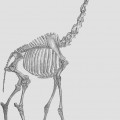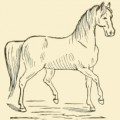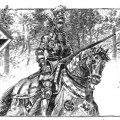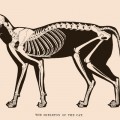While most of A Text-book of Horseshoeing by Anton Lungwitz (1845-1936) and John W. Adams (1862-1926) features drawings of horse hoofs and horseshoes, there was also this great horse skeleton drawing. And, what makes this drawing extra special is that all of the bones are labeled. Good for educational purposes, maybe not so good for artistic purposes though with a little work, you could probably erase the labels.
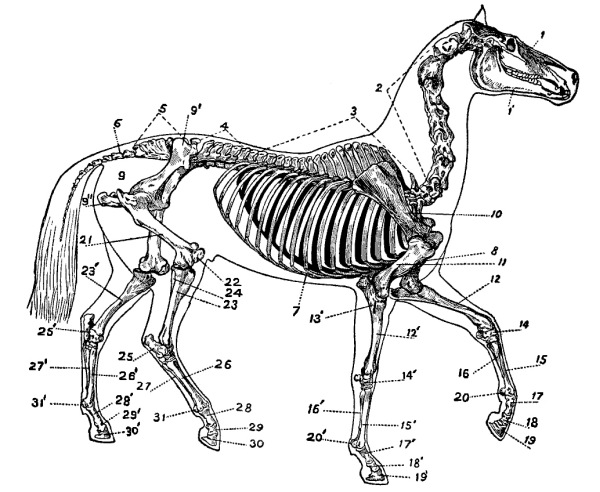
Assuming, you’re like me and don’t know the bones of a horse off the top of your head; here’s the key…
1, bones of the head; 1′, lower jaw; 2, cervical vertebræ; 3, dorsal vertebræ; 4, lumbar vertebræ; 5, sacral vertebræ (sacrum); 6, coccygeal vertebræ; 7, ribs; 8, sternum (breast-bone); 9, pelvis; 9′, ilium; 9″, ischium; 10, scapula (shoulder-blade); 11, humerus; 12, radius; 13, ulna; 14, carpus (knee); 15, large metacarpal bone (cannon); 16, rudimentary metacarpal bones (splint-bones); 17, os suffraginis (long pastern); 18, os coronæ (short pastern); 19, os pedis (hoof-bone); 20, sesamoid bones; 21, femur; 22, patella (knee-pan, stifle); 23, tibia; 24, fibula; 25, tarsus, or hock; 26, large metatarsal bone (cannon); 27, rudimentary metatarsals (splint-bones); 28, os suffraginis (long pastern); 29, os coronæ (short pastern); 30, os pedis (hoof-bone, “coffin bone”); 31, sesamoid bones.
This image is copyright free and in the public domain anywhere that extends copyrights 70 years after death or at least 120 years after publication when the original illustrator is unknown.
